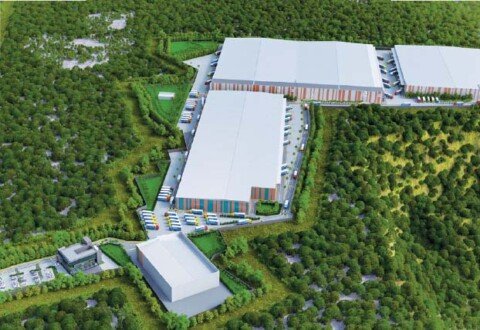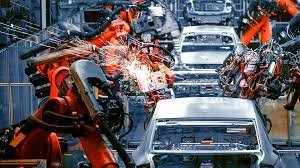Indian road freight industry seems to be recovering post the COVID-19 imposed lockdown. Road freight sector was definitely the worst hit during the lockdown – with cargo movements entirely shut via road and railways, millions of workforce, truck drivers moving back to their hometowns, massive losses due to cargo unavailability and multiple guidelines by the government, etc. ultimately leading to disparity, discrepancy and incongruence in the industry.
Ritika Arora Bhola
Analysts at Ken Research in their latest publication, ‘India Road Freight Market Outlook to 2024’ mentions that the road freight market in India will revive back in 2021 with a faster growth rate owing to the government’s spending on roads, ports and inland coastal shipping to reduce congestion in metropolitan cities, boosting e-commerce sector, and revised axle norms that have reduced freight cost and increased the capacity of trucks in India.
Government’s recent initiatives to revamp road and highways infrastructure, MSMEs and transportation sector has truly brought a ray of hope.
In the past few months, government authorities have taken multiple steps to attract investments in the road infrastructure sector, including revising asset monetisation models and setting up special purpose vehicles for the Delhi-Mumbai corridor project worth Rs 1 lakh crore. Road projects worth Rs 25 lakh crore will also be built as part of Rs 100 lakh crore infrastructure building programme announced recently by the centre.
“Road construction industry has a high potential to revive the economy because liquidity is basically the most important problem. Because of COVID-19, whole world is facing the crucial problem. India is also facing this problem and I feel that investment in infrastructure will bring more liquidity which is very important for Indian economy,” Union Minister NitinGadkari has said.
The present government has also taken initiatives to improve connectivity of the country especially in the North-East through ‘Transformation through Transportation’ project. Investment of Rs. 3 lakh crore has been done in the road sector in Assam and other Northeastern states, recently.
Though the trucking industry in India is highly fragmented in nature andsuffered greatly in Q12020, now, the industry seems to be on the right track and hopes to achieve the pre-COVID-19 cargo levels and capacity by 2021.
Government’s efforts
Akash Bansal, Head- Logistics, Om Logistics states that government’s focus on road infrastructure improvement is a positive sign for the economic growth. “Post-lockdown, there already has been a positive impact of infrastructure improvements and this has substantially reduced travel time on national highways. Even feeder routes infrastructure improvements have added a lot of time saving for our customers. First and last-mile movements are very important part of any logistics chain and now post improvements we are focussing more on the cost benefit analysis of total supply chain for our customers without compromising on the quality of deliverables,” says Bansal.
Focussing on the unavailability of the trained manpower, Mahender Arya, National President, All India Transporters Welfare Association (AITWA) says, “Any infrastructure for the logistics industry will contribute in a positive manner; however the government misses the most vital component of logistics industry- the manpower. There are no programs for any improvement in the quality of manpower. The laws of GST are being misused by applying huge penalties or the threat of those for minor error.”
Dr Sharmila H Amin, Managing Director- South Asia, Bertling Logistics India underlines, “The government under the budget of 2020-2021 has allocated Rs 170,000 crore for transportation which is 8 per cent higher than the budgetary allocation of 2019-2020. The National Infrastructure Pipeline for 2019-2025 pegged the projected capital expenditure for transportation (covering roads, railways, ports and airports) at about Rs 35.7 lakh crore. Various efforts include Bharatamala Pariyojana and the Sagarmala Project and Bangalore rail suburban transport project. All this is in the pipeline will help resolve issues of connectivity and improve speed and last-mile delivery eventually.”
Adding to it, Sumit Kumar, CEO, TCI Cold Chain Solutions says that the introduction of Dedicated Freight Corridors (DFCs) will also boost speed of delivery. “The development of Bhratamala Pariyojana, Sagarmala projects and the Eastern and Western dedicated freight corridors, developments of ports, along with public-private partnership projects has undoubtedly stimulated growth.”
India, at present, ranks 33 in the Global Logistics Performance Index published by the World Bank. This is a significant jump from rank 54 not so long ago. “PM’s vision of Skill, Scale and Speed, coupled with Gadkari’s vision of focussed development of the ecosystem, is gradually showing signs of growth and improvement. However, there are several infrastructural and regional bottlenecks towards any development on a global standard. As I always felt, if India builds roads, the roads shall build India,” ascertains Shankar Chatterjee, Chairman & Managing Director, S CUBE Transcontinental Group.
Sattiraju Srinivas, Senior Director Transport, DHL Supply Chain points out that the Delhi – Mumbai express route, one of the busiest freight routes carrying 15 per cent of India’s total freight traffic is at a distance of 1,450 km and the new highway will reduce transit time by 15 – 20 per cent.
“Furthermore, to improve the overall efficiency in logistics and to create a competitive environment amongst the states, the government has initiated Logistics Ease Across Different States (LEADS) Index which is based on parameters such as highway length, average speeds, performance of toll road, overall infrastructure, services, safety of cargo, timelines, track and trace, etc. These initiatives towards long-haul road connectivity improvements will help in reducing the overall TATs. The last-mile delivery challenges exist more in the short-haul routes and in-city deliveries, which may continue to be the same,” Srinivas elaborates.
Roadblocks
It is certainly true that both central and state governments are taking effective steps to reform the transport sector which include launching the National Highway Development Programme, increasing public funding for transportation in the central government’s Five-Year Plans and accelerated road development programme for remote areas, etc. However, there are various challenges that restrict the growth of the road transportation sector like lack of trained manpower (truck drivers), much-required technological intervention; government machinery is yet to be revamped andsupply chain performance to mention a few.
Arya says that there were issues of finance as well during the lockdown. “Payments got stuck with customers. Government made a huge profit because of the fall in crude at International level; but the prices of diesel were increased. The single truck owners were the main victims of pandemic. With zero business, they were paying all kinds of payments including EMIs, insurance and taxes. Apart from a permission to postpone the EMI, that too with payment of interest, no other benefit was given to them. Lot of truck owners were forced to sell or surrender their vehicles,” addresses Arya.
Here, Sharmila adds, “Higher demand due to e-commerce products and a disturbed production-consumption cycle was another challenge that had to be overcome.”
Bansal says, “Major challenges faced by the industry amid pandemic was losses due to load consolidation/load unavailability, vehicle mobilisation for interstate movements, manpower unavailability mainly drivers, erratic fuel increase and funds deficit. Now everything is on the track and revived.”
Diving into cold chain logistics, Kumar says the main challenges are to hold drivers on trucks, operators and associates in warehouses.
“COVID-19 took the world of transportation almost unaware,” sighs Chatterjee. Hence, in the lesser developed markets like India it was very tough to ensure medical and social compliance being adhered to, and yet continue the transportation business. “The other major challenge was the paradox between the sudden rise in medical supplies versus the drop of vehicle supplies, which went off the roads due to lockdown and also for fear of contacting the virus. There was a major imbalance between demand and supply factors. In India, for example, there were several states like Maharashtra and Bengal which are the worst hit and business of road freight was the only saving grace, but with higher costs in the bargain.”
Lessons learned
The year 2020 has really been a tough year for the industry. Amidst the slowdown in global economic growth in part due to the trade tensions between the US and China and the pandemic sweeping the globe, the road freight industry has received tremendous government support and help to boost industry growth. Some roadblocks in interstate road movements initially created a standstill, but eventually they were removed and essential commodities and goods were able to move across the country.
“Being associated with different industry verticals including essentials, we were instrumental in providing services even during the pandemic to support seamless movements of essential commodities,” says Bansal, adding that businesses have definitely revived now post-lockdown as entire industry is working hard to cover up the deficit/loss that they have incurred in the last few months.”
Arya agrees. “The road freight industry being a service industry depends fully on human power. The unwarranted lockdown caused a very difficult situation for all the truck drivers, but since September transport industry has come to its normal level of functioning.”
Future projections
The Indian road transport sector is undergoing a phase of transition at the moment. The market is definitely expected to grow much faster. With infrastructure improvements, Make in India, Vocal for Local and Ease of doing Business, logistics will play a vital role in India’s growth.
According to Srinivas:
- A large part of the next 1-2 years will be focussed on COVID 19 vaccine distribution related infrastructure enhancements, building required cold storages, enhancing the distributioncapabilities up to the last-mile.
- There will be a cautious approach towards investing heavily in the infrastructure and assets in the immediate short-term of 3-5 years. This may result in an increase in distribution costs.
- With expansion in e-commerce and the omni-channel business models being adopted by many brands, the logistics industry is expected to witness huge growth with specific focus in the areas of fulfilment centres and last-mile delivery capabilities.
- Overall, the logistics industry may become the focal point of investments and companies operating in it can look forward to clocking double digit growth, provided they get their strategies right and invest time, resources and money appropriately.
“The trucking industry is dominated by local domestic players who have a large number of fleets and provide competitive prices,” says Sharmila. “Big companies such as Mahindra and Allcargo are moving towards the asset-light model, subcontracting with local transport vendors and providing value added services such as kitting, assembling, packing and other which are very important in the road freight market.”
She continues, “Online trucking platforms such as Blackbuck, TruckOla, Rivigo and many more are disrupting the logistics space. Increased government spending will benefit the road freight industry and resolve issues of connectivity, speed, and last mile delivery. Government regulations have brought about more transparency and helped increase efficiency in the industry.”
“The entire logistics industry is working hard to ensure that customer demands are being met with best capacity,” says Bansal. “We will keep innovating and improving our service offerings for our customers time and again to be there with whatever is needed by them to best of our capabilities.”
Lalit Das, Founder and CEO, SS Supply Chain Solutions highlights some of the upcoming trends like eco-friendly last-mile delivery and technological revolution. “Hyperlocal delivery model, where the focus is on sourcing and delivering from local vendors to meet the shorter delivery windows, will be implemented to provide faster services. Sustainable last-mile, i.e. eco-friendly last-mile delivery is going to be the upcoming trend. Technology will play a critical role in implementation of this trend, which could be in the form of optimised routes to save fuel and time, optimised scheduling to allocate jobs to the nearest runner boy, and adoption of zero-emission fleet to manage the carbon footprint. Overall, the pandemic has added new pressure to existing opportunities with a renewed focus on meeting customer expectations especially around fast and free delivery, managing inefficiencies, congestion and fragmented supply chains.”
Arya says that with the industry is witnessing a revolution; operations are becoming unviable at smaller levels. “Single truck operators will find it difficult to survive. GST credit is becoming a deciding factor gradually. The government has to make up its mind. If they serve the social cause of giving employment to poor people who are engaged in the lorry business, they should not charge heavy GST of 28 per cent on trucks and tyres. These taxes are direct costs in the hands of single truck owners as they cannot get credit of the same. Whereas the organised transport companies can buy trucks and get this amount as credit, creating a difference in level playing field. Ultimate future of road transport industry is good because the future of economy is good. Growth in economy will always translate into growth of road transport.”
According to Kumar, “Post introduction of GST, the warehousing network got a boost. We are witnessing companies consolidating their warehouses. Big modern warehouses are coming up at a very high pace. I see this transforming more on the ‘hub-spoke’ network. Line haul will mainly be through rail and high capacity multi axle trucks, and final delivery through milk run vehicles. So the sector will move to bigger, longer and heavier vehicles for line haul and smaller vehicles for last-mile.”
Surely the road freight sector is improving, but there’s a long way to go before it becomes more professional, finds International investors, be compliant with HSSE norms- Green – Global Climate change regulations, and above all, evolve to the concept of digital shared services for better consolidation and more profitable economics. “The Government needs to build the overall ecosystem and then leave the transport business to businessmen. Tax rebates and GST holidays can make things cheaper and the positive impact shall spread across economies on every product and services,” says Chatterjee.







